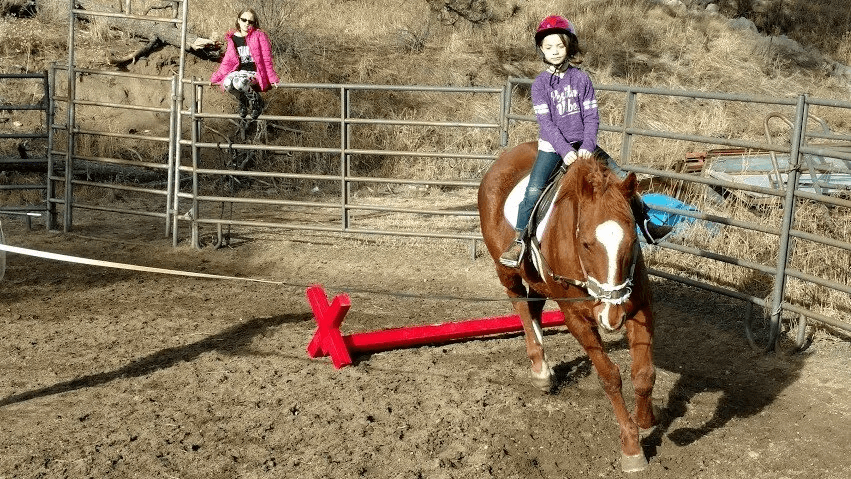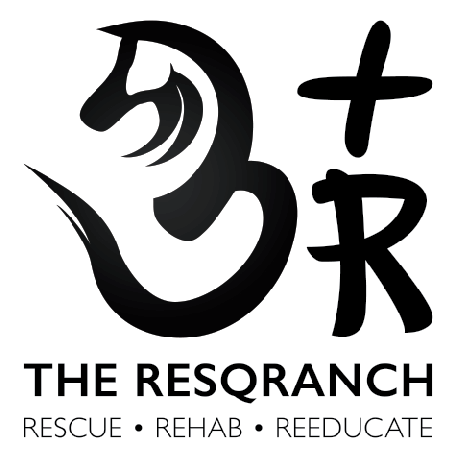Hi everyone!
DrQ here again with another installment in the training of Oliver.
Last week we had helpers to assist with working with him, so it was a new, good experience for him to have the support of two people, even if one of them is a very small, inexperienced young person.
That is the beauty of the program we follow here at the Resqranch. It doesn’t matter if the trainer is young, old, feeble, or strong, if you follow the program as it is outlined, you will stay safe, and get the job done without force, fear, and nearly zero chance of injury. Now what other horse trainer claims that from their program? NONE that I have ever heard of!
So now that he is lunging quietly in both directions at all gaits, we now introduce a rider, WITHOUT A BRIDLE, just seat, and legs. We like to teach the seat and legs cue’s as a completely separate set of instructions, before beginning to add the use of reins of a bridle.
How do you know if your rider is ready to pick up the reins? The answer is simple. Can the rider balance themselves in the saddle, heels down, rear end up and out of the saddle (the classic 2-point position), without falling forward or back with the horse moving at the trot? If so, then voila, the proof is there, the rider is stable enough in their core to hold themselves up and not inadvertently give the horse incorrect rein signals. If not, as is the case in the photos with our young rider who is still struggling to keep her heels down in the stirrups, it’s no problem at all, just keep her riding on the lunge until she builds the strength and coordination. It is good practice for the horse, nice because the rider’s weight is very light and easy on the animal (especially one recovering from an injury like Oliver).
Additionally, how do you know if the horse understands the signals from the reins? Well, that is the reason we teach that lesson completely separately, through the use of the long lines. In this way, we can introduce the horse to what the signals from the reins mean, without the additional stress of being on them.
Once horses learn the two lessons, the rein signals and the leg/seat signals, that is when we put those two lessons together to complete the process of learning how to respond to being ridden.
In conclusion, this week with Oliver he had the opportunity to practice just carrying a light person without the added burden of being pulled on by reins. Today we worked him in the long reins around cones perfecting his responsiveness to the rein aids, as well as mixed it up a little by introducing clicker training to teach the Spanish walk (a good one to look up videos on youtube if you have never seen that before). All in all, lessons are progressing smoothly and slowly, even a little boring. With horses, boring is good, because then everyone stays safe around this potentially dangerous thousand pound easily frightened animal.
On that note, it’s time to head off to the feed store to buy more bedding for his stall and refill our supply of grain. Please forward this blog on to anyone interested in training animals, especially horses. And if our mission touches your heart, please donate to our worthy cause so we can continue to expand the program. In fact, if you live in the Conifer area and would like to have FREE private training lessons, please contact me as we currently have openings for children and adults at the Resqranch.
May your holiday preparations by peaceful and full of joy! God bless!

